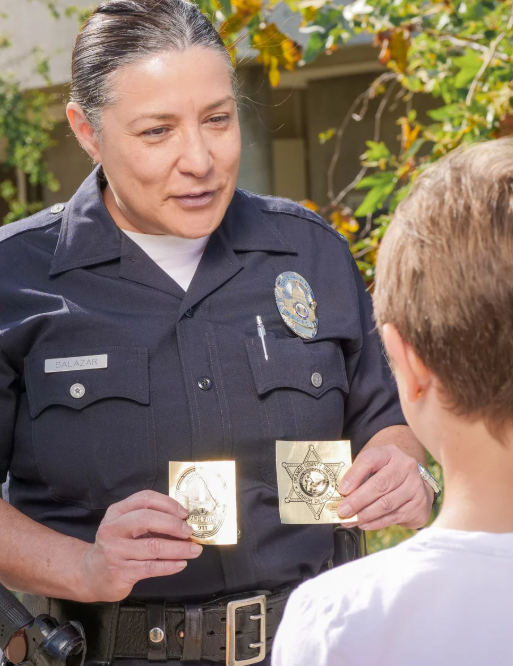https://www.hannah.com/DesktopDefaultPublic.aspx?type=hns&id=7oNyThSQjHk%3d&u=mPrYLmJcOEk%3d
Ohio Attorney General Dave Yost answered the “defund” movement Monday by saying Ohio needs better police practices rather than reduced police presence.
Addressing the state’s annual Law Enforcement Conference, Yost said it is “patently absurd” to treat George Floyd’s tragic death at the hands of Minneapolis police as a larger indictment of day-to-day policing in the state and nation.
“Make no mistake about it — and while I’m proud to say I’m involved in law enforcement — I have never seen a time that is as awful as this, the invective that is put out toward people who protect us every day,” he stated, saying officers who signed up to protect and serve probably did not know “putting a badge on their chest maybe meant putting a target on their backs.”
Yost said a policeman’s job is to “see the truth, smite evil and do justice.”
“That is our job; that’s what we do. I won’t deny that law enforcement sometimes involves force …,” he said. “Not everyone we encounter out there is a good person just having a bad day. … Let’s not make this out to be a peaceful wonderland where if everybody understood each other, everything would be hunky dory.”
Yost called “nonsense” the idea that under-funding police departments will enhance public safety. He compared it to would-be criminals waiting at an intersection for the light to change.
“When we take funding away from law enforcement, we turn the light green,” he said. “We don’t need less policing; we need better policing.”
He said that translates into better law enforcement training, not only in policies and practices but also in physical preparedness both in the academy and throughout an officer’s career.
“We give you so many hours of basic training and turn you lose,” Yost said, pointing to the need for substantive, ongoing instruction. “Maybe the state will give us the money, maybe it won’t.”
At the same time, he said one can’t necessarily train out unwanted behaviors in an officer.
“We all know there are people who shouldn’t have a badge,” Yost said. “Maybe they were marking time until they got to 25 [years]. We’ve all seen it. They turn your communities against you. They make it harder to do your job.”
He acknowledged collective bargaining can make it more difficult to terminate an officer, but also that there are better ways to deal with problem police than having them removed for a felony.
“We need to make sure no one is subject to an unrighteous [law enforcement] license,” Yost said. “We need to make sure those people in the videos are not on the job anymore.”
The alternative, he said, are “people taught to distrust police by their experience with those who shouldn’t have a badge.”
Yost sought to encourage conference participants as the state and nation move toward a contentious election and loud voices on both sides.
“You’re going to make a difference for good, ‘big good,’ regardless of what the people howling on the television say. They don’t speak for everyone. They are not the majority,” he said.
Later in the day, presenters from the “Building Mutual Respect and Community Trust” police training program anchored a panel discussion with the same title. Lt. Mike Hutson (retired) of Mutual Respect Consulting, Executive Director Jessica Colombi of Cleveland State University’s career services, and Director Normella Walker of Brigham Health’s diversity, equity and inclusion program said it is law enforcement, not citizens, who set the tone for community-police relations.
“It’s the officer’s behaviors that control the vast majority of interactions they have with the public,” Huston said, noting police must be honest about their own implicit biases and emotional triggers. “What’s going to set you off out there? You have to know that so you can manage it.”
Walker said that also requires cultural competence in an increasingly diverse United States.
“How do you interact with the public when 50 percent of them do not look like you, think like you or behave like you …,” she said. “People are always watching what you do with your power. Power is the ability to control or punish. It’s also the ability to influence or persuade.”
Columbi broke that down further. “Are you autocratic in your tone or are you nonthreatening?” she said. “The power voice exacerbates problems; the civil voice resolves problems.”
Hutson laid out the basic detention standard for community-police interactions: “Reasonable suspicion or probable cause. If you don’t have it, you can’t detain somebody.”
Concluding the presentation, he presented a series of on-location videos of community-police interactions. In one, a White officer approaches a young Black driver who has struck a pole with snow piled along the road. The officer contradicts his account of hitting an icy patch and eventually puts him on the ground in handcuffs after a White bystander says he was driving erratically. Hutson said roughly 600 officers have seen the video, and all said the patrolman in the video was in the wrong.
“If everybody thinks we should not treating people in the public like this, why does it keep happening?” Hutson asked.
Story originally published in The Hannah Report on September 14, 2020. Copyright 2020 Hannah News Service, Inc.

